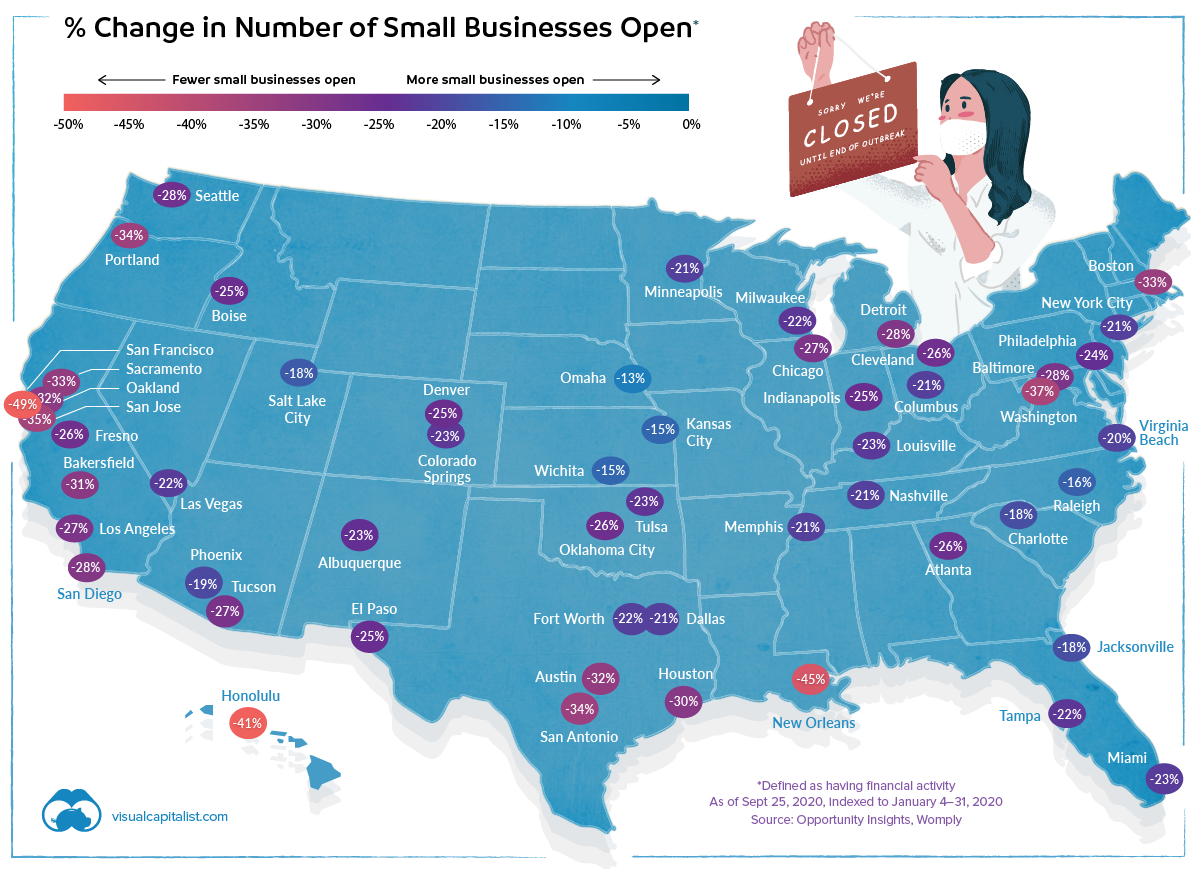The 1980's were witness to "The Great Divergence"
- decades later the gaps in differences are wider
This was updated 13 hours ago by Bloomberg News
-----------------------------------------------------------------------------------------------------------------------------
More >
". . .Headwinds from the new COVID-19 surge ahead of the winter could easily derail economic progress, said Daniel Zhao, senior economist with Glassdoor, a jobs and recruiting website. “This puts responsibility in the hands of policymakers and the next president to manage both the health and economic crises.”
OCTOBER 2020
Uneven U.S. job market recovery points to need for focused fiscal aid
NEW YORK/SAN FRANCISCO (Reuters) - The big decline in the U.S. unemployment rate last month suggests the economy needs less a broad pandemic relief package than targeted support for hard-hit sectors, even as an unprecedented surge in COVID-19 cases raises questions about the durability of the job market rebound.
---------------------------------------------------------------------------------------------------------------------------
More from The Federal Reserve Bank of New York via the blog Liberty Street Economics
More from The Federal Reserve Bank of New York via the blog Liberty Street Economics
About the Blog
Liberty Street Economics features insight and analysis from New York Fed economists working at the intersection of research and policy. Launched in 2011, the blog takes its name from the Bank’s headquarters at 33 Liberty Street in Manhattan’s Financial District.
The editors are Michael Fleming, Andrew Haughwout, Thomas Klitgaard, and Asani Sarkar, all economists in the Bank’s Research Group.
Liberty Street Economics does not publish new posts during the blackout periods surrounding Federal Open Market Committee meetings.
The views expressed are those of the authors, and do not necessarily reflect the position of the New York Fed or the Federal Reserve System.
The editors are Michael Fleming, Andrew Haughwout, Thomas Klitgaard, and Asani Sarkar, all economists in the Bank’s Research Group.
Liberty Street Economics does not publish new posts during the blackout periods surrounding Federal Open Market Committee meetings.
The views expressed are those of the authors, and do not necessarily reflect the position of the New York Fed or the Federal Reserve System.
February 09, 2021
Black and White Differences in the Labor Market Recovery from COVID-1
The ongoing COVID-19 pandemic and the various measures put in place to contain it caused a rapid deterioration in labor market conditions for many workers and plunged the nation into recession.
The unemployment rate increased dramatically during the COVID recession, rising from 3.5 percent in February to 14.8 percent in April, accompanied by an almost three percentage point decline in labor force participation. While the subsequent labor market recovery in the aggregate has exceeded even some of the most optimistic scenarios put forth soon after this dramatic rise, the recovery has been markedly weaker for the Black population.
In this post, we document several striking differences in labor market outcomes by race and use Current Population Survey (CPS) data to better understand them. . .
The COVID recession, like most post-war recessions, has had disproportionate effects on the Black population. We trace the rising and persistent Black-white unemployment and labor force participation gaps to the underlying flows between labor market states. For Black workers, a lower job-finding rate and a higher separation rate into unemployment have contributed to the larger increase and subsequent slower recovery of the unemployment rate. While the job-finding and job-loss rates for Black and white workers have converged recently, resulting in a narrowing of the Black-white unemployment gap, the transition rate from employment into nonparticipation for Black workers remains elevated. This relatively high rate of labor force exit for Black workers may lead to a persistently elevated Black-white labor force participation gap and an uneven labor market recovery."





No comments:
Post a Comment